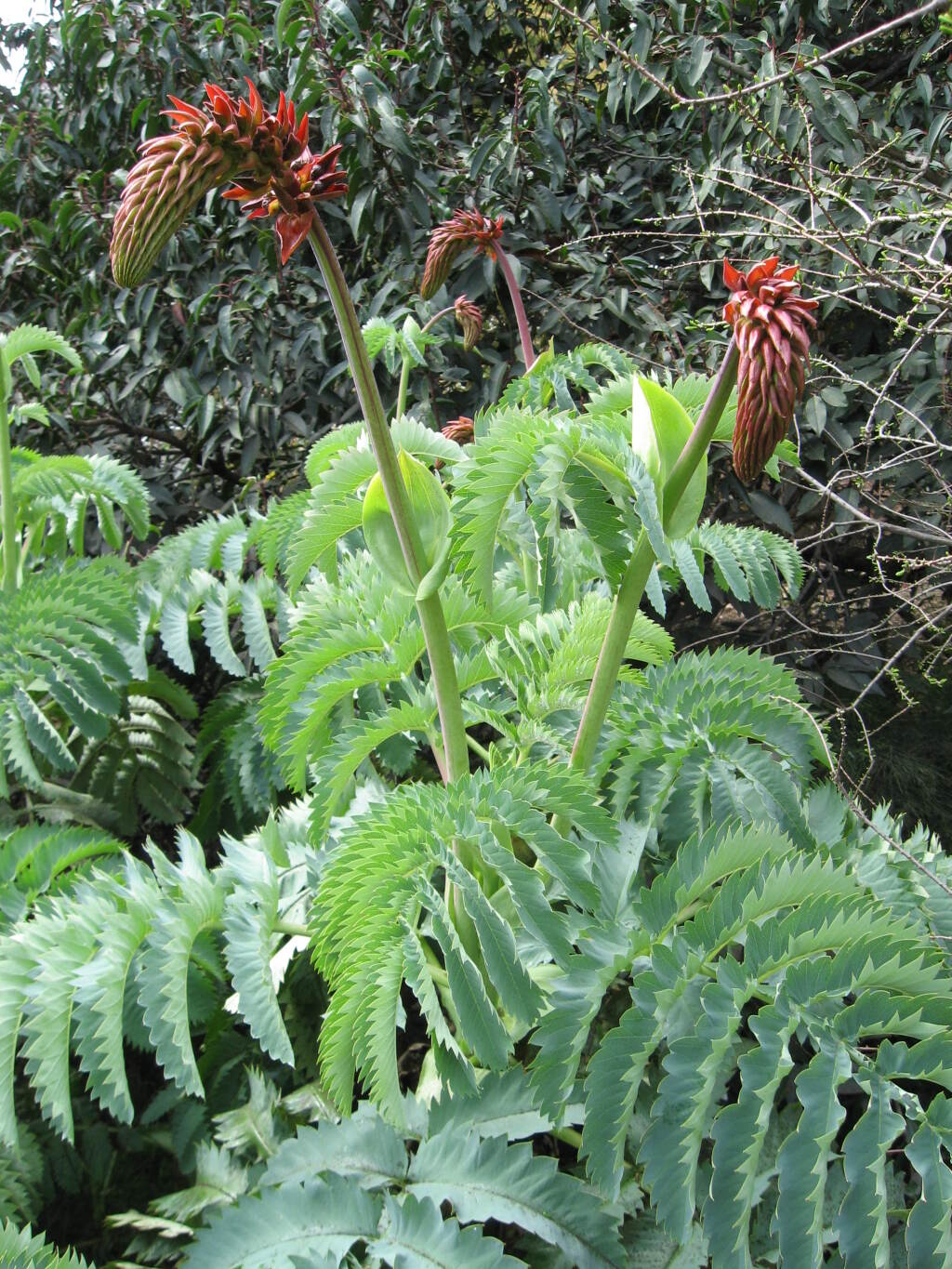Melianthus major
L. Cape Honey-flowerErect, sappy shrub 2–3 m high; branches glaucous, almost glabrous. Leaves 15–35 cm long; leaflets 9–13, lanceolate, 4–12 cm long, 3–5 cm wide, deeply serrate, sessile, green and glabrous on both surfaces; stipules wholly united, lanceolate, usually 5–8 cm long, attached to lower part of petiole. Racemes nodding, 30–40 cm long; pedicels 15–25 mm long; bracts ovate, 15–25 mm long, acuminate. Flowers dense; sepals ovate, shortly pouched at base, sparsely hairy, reddish; upper pair 20–25 mm long, lower 3 shorter; petals oblanceolate, 12–15 mm long, reddish-brown. Capsule 30–40 mm long, deeply 4-lobed, glabrous; seeds ovoid, c. 6 mm long. Flowers mainly spring and summer.
MuM, GleP, VVP, GipP, OtP, WaP, CVU, DunT, NIS, EGL, HSF. Also natu-ralized SA, Qld, NSW. Native to South Africa. Like M. comosus, cultivated and naturalised (to a greater extent) in southern parts of the state (e.g. Mt Napier, Tyrendarra, Port Albert, Lake Reeve, Mallacoota).
Jeanes, J.A. (1999). Melianthaceae. In: Walsh, N.G.; Entwisle, T.J., Flora of Victoria Vol. 4, Cornaceae to Asteraceae, pp. 138–139. Inkata Press, Melbourne.
 Spinning
Spinning




